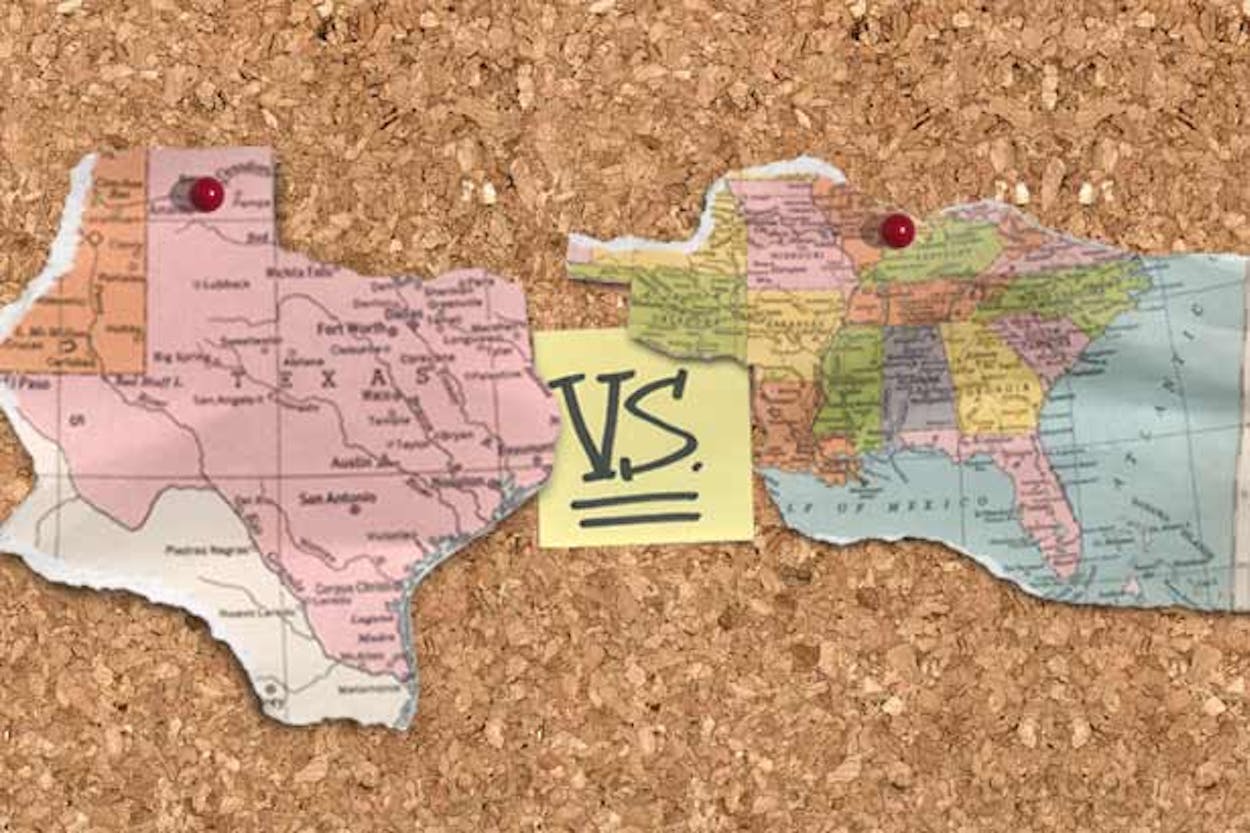CALVIN TRILLIN: I’m pretty ecumenical. I like Texas barbecue and I like North Carolina barbecue. But there’s more to barbecue than the barbecue. I started going to Arthur Bryant’s, in Kansas City, at the beginning of the time when the oldest person or the most daring person among my friends drove, which in those days was pretty early and so it has that connection for me. It also has the connection when I look back at it, I realized it might’ve been one of the few integrated restaurants in Kansas City.
GREGORY CURTIS: If not the only.
CT: Black people ran it and white people couldn’t stay away from it. I wrote at one point about imagining two soldiers after their basic training leave at Fort Riley. They go into Kansas City, and they find their way. The neighborhood is looking a little chancey, and they see this dusty jug of barbecue sauce in the window, and the white soldier is getting a little more nervous, but then he’s thinking that he was raised to judge a person not by the color of his skin. This is his friend, after all, and he’s gonna go with his friend, so he walks in, and it’s the best restaurant in the world. For one time in the history of the Republic, virtue has been rewarded. He’s there. Texas, that’s another difference. As you well know, the Central Texas barbecue is essentially a white art.
GC: I think that’s an interesting difference, because, yes, in Kansas City barbecue there’s definitely this racial element. Particularly in the days that you’re talking about. Now, that’s not present anymore in the way that it was.
CT: I always said that in those days in Kansas City as opposed to Texas going to a white-run barbecue was like going to a Gentile internist—things might work out, but you’re not playing the percentages. That’s certainly not true in Texas. It grew out of different traditions.
GC: Yes, the Texas tradition is really a butcher shop or meat market tradition.
CT: There was a man named John Hess, a correspondent for the Times for a while, and then he was the restaurant critic. And he and his wife went to Bryant’s and they didn’t like it. They thought it was greasy or something. I couldn’t understand it at first—I thought, here were the Hesses, a really distinguished-looking couple; he had a white beard, she was a quite handsome woman. And then I realized—distinguished looking! That’s it! When they walked into Arthur Bryant’s, Ritchie, who used to pull the plate over with one hand and throw the ribs on with the other hand, was so impressed that he reached under the counter for some tongs that he had last used in 1938, for a visit from the emperor Haile Selassie. And what nobody told the Hesses is that a lot of the flavor was in Ritchie’s right hand! They didn’t get that! The other thing I remember about Arthur Bryant’s is the burnt ends. They weren’t on the menu. They were just given to you free as you walked through the line. And when I went back to Arthur Bryant’s years later, they had the burnt ends on the menu. They had ’em mixed up with sauce.
GC: At Louie Mueller’s he just gives them to you. Louie Mueller’s, it just has the right thing, you know?
CT: I’m also not sure that the rules are quite as straight in Kansas City as they are in Texas. I mean, in Texas, there’s almost a ritual, possibly because Kansas City barbecue is an urban thing.
GC: Well, historically, in Texas the cities were suspect. Real barbecue was in the rural places.
CT: Now here’s another difference: Not to boast, but I think that Kansas City barbecue people are generally surlier than Texas barbecue people. I’m reminded of a story about the late Fats Goldberg, the pizza baron, when he moved back to Kansas City. A new barbecue place had opened called LC’s. And Fats went out there when it first opened, and he said he’d like a brisket sandwich and could LC put the sauce on the side? And LC said, “That’ll be fifty cents extra.” Fats was very impressed. He said, “That’s a real barbecue guy.” So not to boast, but I would say that barbecue guys are surlier in Kansas City.
GC: I would yield that point.
CT: Maybe it’s the urban-rural thing. In Kansas City, people are harried by trying to serve impatient white bankers, so they tend to be surly.
GC: Mean Ritchie, of course, was the epitome of that.
CT: And yet, who gave you those burnt ends? It was Mean Ritchie.
GC: And getting it from him made ’em taste even better.
CT: But I have to say that the acceptance of barbecue came gradually in Kansas City. Even today it’s not totally accepted.
GC: Which may be why it’s Texas barbecue that’s in ascendance. There’s a reason why, when people outside the state open barbecue joints, they open Texas barbecue joints.
CT: There was a time when the distinction wasn’t made.
GC: Not anymore.
CT: It may be because Texas barbecue has stuck more to what it is. It’s more traditionalist than Kansas City. Particularly in the last decade or two, as people in Kansas City have spread out more. Whereas Texas barbecue remains a style of barbecue of its own.
GC: One reason may be that Texas barbecue tends toward an ideal. There’s a Platonic brisket. It exists in the mind, and you can kind of sense how far away whatever you’re eating is from that ideal.
CT: Yeah, Kansas City barbecue’s more diffuse than that. But again, I’ll brag about the surliness. I recall meeting the person who cooks at Snow’s—Tootsie, I believe her name is. She was a very pleasant woman.
(This story originally appeared in the June 2013 issue of Texas Monthly.)






